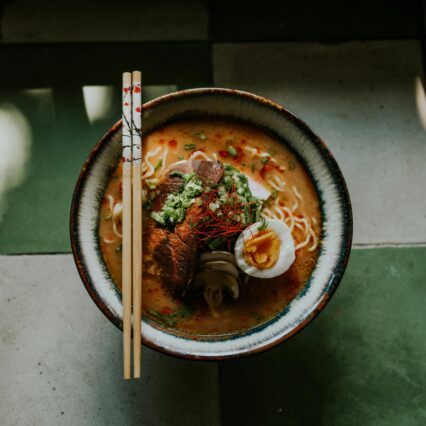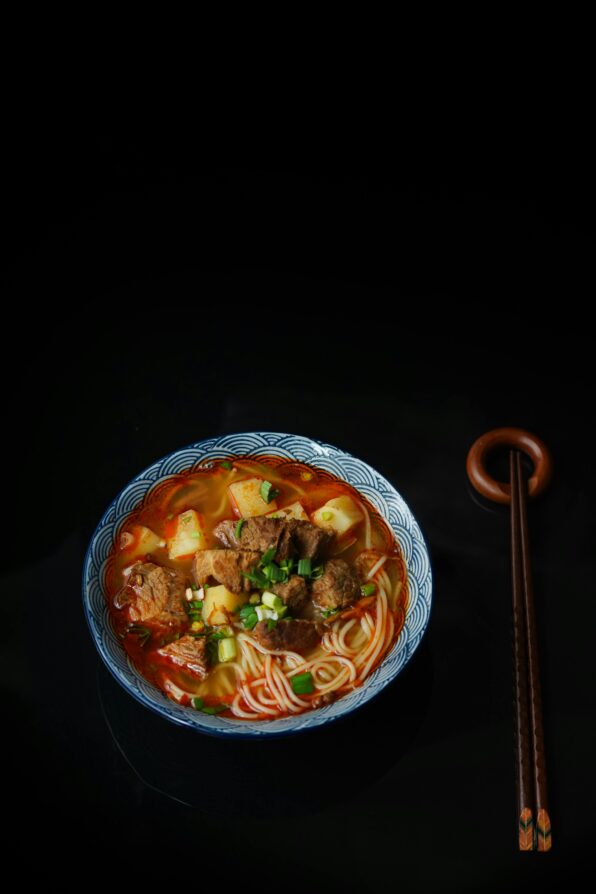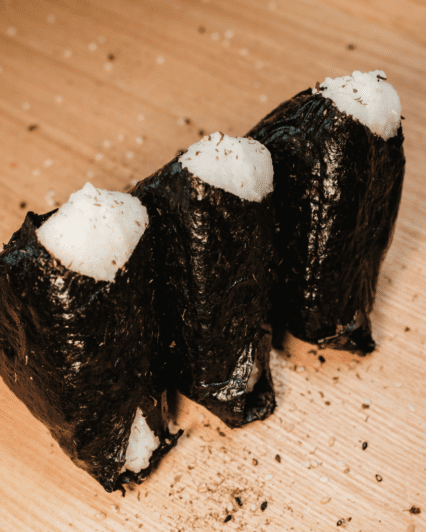All About Different Types of Ramen

All About Different Types of Ramen
How are different types of ramen classified?
Ramen can be classified in several ways, with each factor “stacked” on top of the others.
At its core, ramen is typically defined by the stock (the soup base) and the tare (the concentrated seasoning sauce added to the stock). Beyond these, ramen can be further classified by how the ingredients are served, the type of noodles, and the use of aromatic oils.
The most common stock is pork-based tonkotsu, but there are others like chicken, umami-rich dashi, vegetarian, and more. Dashi can be used alone or combined with other stocks to create a deeper flavor.
Like stocks, there are varieties of tare sauce. The three main types are shio or salt, shoyu or soy sauce, and miso.
Some online sources may refer to different stocks and tares as distinct types of ramen, for example, treating ‘tonkotsu’ and ‘shoyu’ ramen as mutually exclusive categories. However, this is not accurate.
In fact, not only is a ramen stock and a ramen tare not mutually exclusive, but rather they are the two most important components to the ramen broth, which by definition have to be used together.
With that in mind, let’s start out by exploring the types of stock that form the base of most broths. 
The Stock
This isn’t an all-encompassing list of ramen stocks, and even if it were, stocks can be combined and vary from chef to chef. A tonkotsu stock at one restaurant might taste different from the same kind of stock somewhere else. Additionally, regions of Japan often have their own specialty stocks.
Meat-based stocks can be made as cloudier (paitan) or clearer (chintan) varieties. The former is cloudy, riche and creamy from more collagen and bone breakdown, while the latter is clear, light and delicate.
Tonkotsu (pork)
Tonkotsu, particularly popular in North America, is rich and creamy, achieved by boiling pork bones for long periods. Its opaqueness reflects the fullness of flavor. Some are made purely with pork bones, but others will include vegetables, aromatics, or even other animal products like chicken and walk the line between tonkotsu and other stock types.
Qualities: Rich, filling, creamy, substantial
Tork (Chicken)
Given chicken’s versatility, tori ramen stock can easily be transformed into either a richer paitan or a lighter chintan. In many ways, chicken stock for ramen embodies the characteristics we expect from all chicken broths: it is more balanced and less intense than pork or beef stocks, while still being wholesome and substantial. Additionally, chicken stock-based ramens often feature a complexity and silkiness that set them apart from other chicken stocks.
Tori ramen stock can encompass a wide array of flavors and textures, allowing you to create everything from a flavorful yet lighter broth to one as rich and satisfying as tonkotsu.
Qualities: Wholesome, balanced, versatile.
Seafood
Seafood stocks are not the most commonly served, and when they are, it’s often in combination with another stock, such as tori or tonkotsu. However, you can create a delicious ramen stock using a variety of fish, shellfish, and seaweed, whether on their own or blended with a meatier stock.
Given the multitude of seafood options, there’s an equally diverse range of flavor profiles you can achieve with a seafood stock. Some stocks may lean toward a dashi-like emphasis on umami complexity, while others can be sweeter—such as those made from shellfish like crab shells or shrimp tails. These sweeter, brighter ingredients pair especially well with aromatics like ginger and garlic.
Qualities: Diverse, sweet, umami-rich.
Vegetarian
While ramen traditionally uses a creamier, meat-based stock, there’s no rule that you can’t make a delicious stock out of non-animal products.
Certain ingredients can help you craft a “meaty” stock that offers a more substantial backbone than what is typically associated with vegetable stocks. Mushrooms, in particular, can add a variety of umami components, enhancing the stock’s depth. Additionally, aromatics and root vegetables contribute to a fuller flavor and complex sweetness.
Vegetarian stocks are especially well-suited for making spicy tan tan ramen and pair wonderfully with flavorful miso tare.
Qualities: Lighter, but substantial.
The Tare
The stock is the backbone of a bowl of ramen, but the tare, or the seasoning sauce is where the definitive concentration of flavor comes from. When mixed with the stock, the tare helps create a full broth.
Shio (salt)
Shio is a simple salt-based tare, often regarded as one of the best ways to judge the quality of ramen. Unlike other tare options, it primarily enhances the stock without introducing a multitude of additional flavor profiles.
Shio is ideal for allowing the stock to shine. However, if you have a stock with a particularly complex flavor profile, you may find that a more potent tare could overwhelm it.
Qualities: Simple, light, complementary, pure.
Shoyu (soy sauce)
Shoyu tare is soy sauce-based and is more assertive than shio tare.
With its concentrated, umami-rich profile, shoyu complements substantial stocks like creamy tonkotsu while enhancing the stock’s natural flavors rather than overpowering them.
This versatility allows shoyu to be used in ramen with a bolder, richer profile, but it also works well to emphasize a lighter ramen stock.
Qualities: Complex, umami-forward.
Miso
Miso is the most intense tare of the three. For this reason, it can be popular as a way to “umami up” a vegetarian ramen, although by no means is it limited to that use.
While shio and shoyu tare primarily enhance the flavor of the stock, miso introduces its own robust profile to a bowl of ramen. This tare is the boldest of the trio and can dominate a ramen dish in a way that the others cannot, and that can be a positive aspect.
Qualities: Assertive, tangy, bold, extra-umami-rich.
The Others: Tsukemen & Ways to Spice up an Instant Noodle Pack
In addition to the big, steaming bowls of broth and noodles, ramen can also be enjoyed as tsukemen, where the noodles and “broth” are served separately.
The term “broth” is placed in quotes because the broth served with tsukemen resembles a sauce more than traditional ramen broth. While standard ramen broth is already packed with flavor, the dipping broth for tsukemen is reduced to create an even more concentrated taste. Additionally, the noodles in tsukemen are typically served cold or at room temperature, providing a contrast to the hot, sauce-like dipping broth.
Lastly is instant ramen.
Instant ramen can be a quick, easy, and inexpensive way to fill up, but it’s possible to elevate it and create a dish that is not only tasty and substantial but also packed with real nutrients.
For example, this version via the New York Times Cooking from Korean-American chef Roy Choi, offers a delicious twist to his ramen recipe. He enhances instant ramen by adding an egg, scallions, sesame seeds, a bit of butter, and melted American cheese, calling it “our snack…our peanut butter and jelly sandwich.” Another great option comes from the Food Takes Flight’s where saucy instant noodles are finished in a quick-thickening, aromatic sweet and spicy soy-based sauce, accompanied by your choice of vegetables and tofu.
Whether you’re spending 18 hours roasting and boiling pork bones to achieve a delectably creamy tonkotsu ramen or just three minutes to whip up a quick, delicious snack, ramen is the perfect wholesome, warming meal. You can find everything you need to create it at Uwajimaya.




